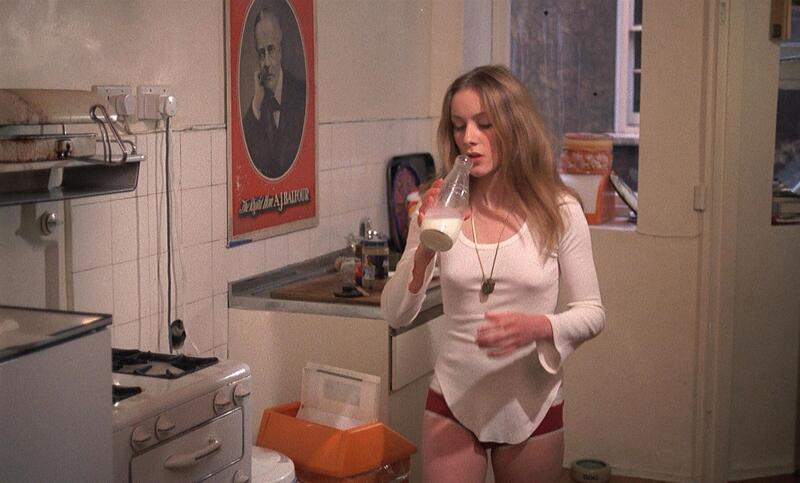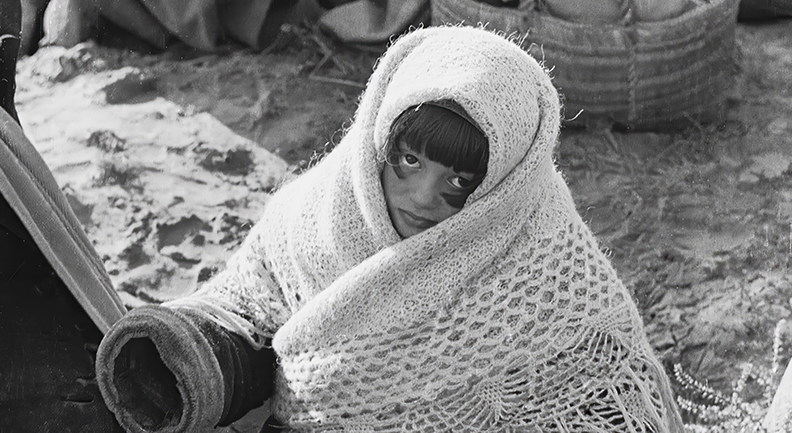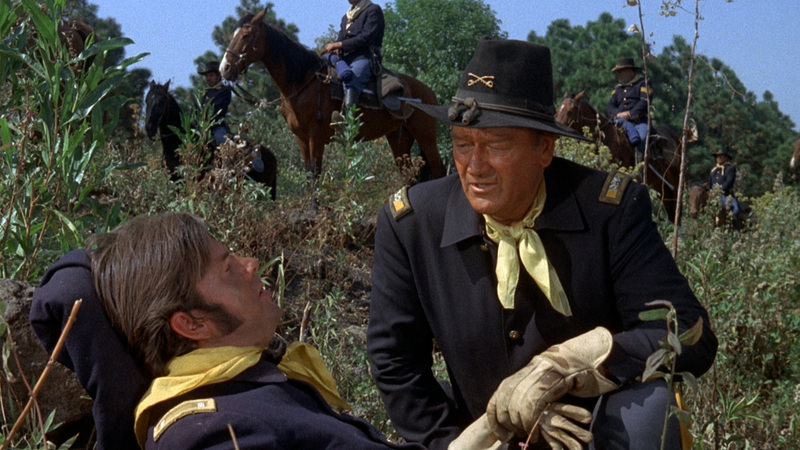
When Trust and Terror Collide
MOVIE REVIEW
Frightmare (Kino Cult #40) (Blu-ray)
–
Genre: Horror, Cult
Year Released: 1974
Runtime: 1h 26m
Director(s): Pete Walker
Writer(s): David McGillivray, Pete Walker
Cast: Rupert Davies, Sheila Keith, Deborah Fairfax, Paul Greenwood, Leo Genn, Kim Butcher
Where to Watch: available now, order your copy here: www.kinolorber.com or www.amazon.com
RAVING REVIEW: FRIGHTMARE wastes no time letting its terms be known. Instead of the usual slasher theatrics or exaggerated shocks that defined many horror films of its era, this one takes a quieter, meaner route. It opens with a straightforward premise: a woman once deemed criminally insane for cannibalistic murders is released back into society, ready to live freely with her devoted husband on a secluded farm. The horror isn’t built around jump scares or abrupt intrusions; it’s built around the realization that the system has absolutely misjudged her. The threat is not something that creeps through the woods or lurks beneath the floorboards. The danger sits in a farmhouse, reading tarot cards with a smile and an appetite she never lost.
At its core, FRIGHTMARE is a story about misplaced trust and generational harm. Pete Walker directs the film with an eye toward the illusions families construct to protect themselves. Edmund Yates, played with worn-down sincerity by Rupert Davies, becomes the embodiment of denial. He knows who his wife is. He knows what she has done. But he clings to a fantasy that love alone can neutralize violence. His inability to confront the truth echoes throughout the film, defining not only his marriage but also the danger posed to anyone who crosses Dorothy’s path. This tension gives the story a heaviness that makes every scene feel like it’s inching toward an inevitable snap.
Sheila Keith’s performance as Dorothy Yates is the centerpiece that makes the film unforgettable. She moves between two personas with effortless precision: the polite, grandmotherly facade and the unhinged, predatory hunger that breaks through it. Walker doesn’t present her outbursts as silly or campy; instead, he treats them as chilling eruptions from someone who cannot understand why she should suppress her nature. Keith’s acting never overplays the madness. It simmers, surfaces, and then retreats with ease. Her stillness is often more terrifying than her attacks.
Debbie, played by Kim Butcher, is a portrait of escalating instability. She watches her mother’s behavior and internalizes it as an inheritance rather than an aberration. It becomes clear that Dorothy’s influence didn’t die during her institutionalization; it merely waited to find new ground to grow. Debbie’s cruelty doesn’t come across as exaggerated; it feels like the inevitable outcome of a household that has spent years burying the truth. Her scenes add a sense of dread that goes beyond surface shocks. They suggest a cycle that will not stop until someone confronts it, and the film makes clear that very few characters are willing to do that.
Jackie, the older daughter, plays the reluctant bridge between worlds. She sees her mother for who she is but tries to mediate without fully embracing the severity of the danger. Her attempts to maintain order crumble quickly. Jackie represents those who think they can manage chaos without naming it. Through her, the film explores the emotional toll of being caught between loyalty and terror. She is the most sympathetic character because she recognizes the truth but cannot fully act on it until it’s far too late.
Walker grounds the film in realism, setting it apart from many of its contemporaries. The rural setting isn’t steeped in gothic theatrics. There are no sweeping landscapes or stylistic flourishes. The farmhouse looks ordinary. The rooms feel lived in. The mundanity of the environment heightens the horror because it suggests that something this violent can exist in the most unremarkable corners of the world. The violence itself is sudden and messy, not stylized. Even when the film holds back from showing too much, every moment carries weight because the implications are unmistakable.
One of the film’s strongest qualities is its pacing. The story unfolds, letting the audience become familiar with the characters before tightening its grip. The dread grows not from what is happening on screen but from what everyone is refusing to acknowledge. Every small conversation has an unspoken truth beneath it. Every seemingly ordinary moment feels like it could tilt into bloodshed. This constant pressure builds toward an ending that doesn’t release tension so much as sharpen it.
The film is not without rough edges. Some supporting performances are stiff, and a few subplots feel underdeveloped. But these flaws don’t diminish the film’s impact. If anything, the unpolished elements add to its raw atmosphere. FRIGHTMARE succeeds not because it’s refined, but because it fully commits to its unsettling tone. It’s messy in a way that fits the story’s thematic underbelly.
The final act is where Walker’s intentions become unmistakable. The film doesn’t try to comfort its audience or offer easy resolutions. Instead, it leans into its bleakest implications. Families can cause harm. Love can blind people to danger. Cycles of violence often repeat because people choose not to interrupt them. The final moments leave the viewer with a sense of unfinished business, in line with the film’s refusal to offer tidy answers.
FRIGHTMARE stands out as one of the more distinctive horror entries from the 1970s. It avoids the theatricality of Hammer, the grainy chaos of American slashers, and the excess of exploitation cinema. Instead, it delivers something more intimate and psychologically grounded. Its scares come from the collision of everyday life with impulses too dark to rationalize. That grounded brutality is what gives the film its staying power. For anyone exploring the stranger, grimmer corners of horror history, FRIGHTMARE earns its reputation. It is unsettling without being gratuitous, character-driven without softening its edges, and memorable without leaning on nostalgia. It’s the kind of film that lingers not because of shock value but because it understands how horror grows in families, in silence, and in the places people pretend not to see.
Please visit https://linktr.ee/overlyhonestr for more reviews.
You can follow me on Letterboxd, Instagram, Twitter, and YouTube. My social media accounts can also be found on most platforms by searching for 'Overly Honest Reviews'.
I’m always happy to hear from my readers; please don't hesitate to say hello or send me any questions about movies.
[photo courtesy of KINO CULT, KINO LORBER]
DISCLAIMER:
At Overly Honest Movie Reviews, we value honesty and transparency. Occasionally, we receive complimentary items for review, including DVDs, Blu-rays, CDs, Vinyl Records, Books, and more. We assure you that these arrangements do not influence our reviews, as we are committed to providing unbiased and sincere evaluations. We aim to help you make informed entertainment choices regardless of our relationship with distributors or producers.
Amazon Affiliate Links:
Additionally, this site contains Amazon affiliate links. If you purchase through these links, we may receive a commission. This affiliate arrangement does not affect our commitment to honest reviews and helps support our site. We appreciate your trust and support in navigating these links.



Average Rating